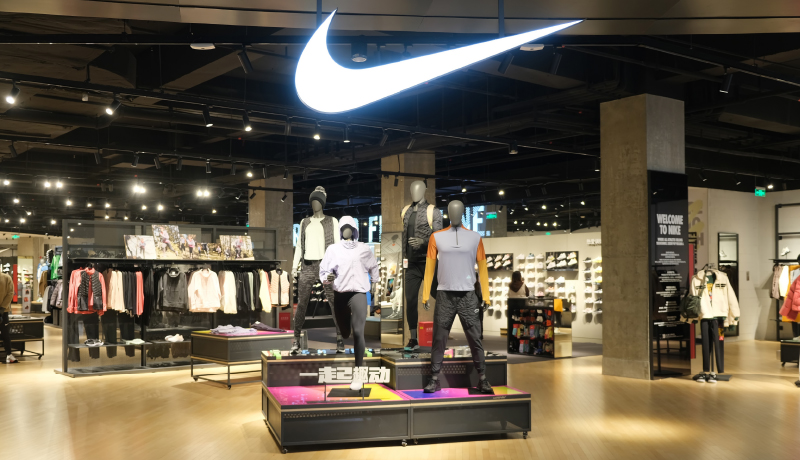Retail Stores as Fulfillment Hubs; Logistics Trends to Watch; Women Thrive in Manufacturing; other Supply Chain and Logistics News

Retail’s Big Shift
It’s official: Retailers are no longer just merchants; they’re experts at building logistics networks. Leading retailers are transforming stores into fulfillment hubs, cutting costs while speeding delivery. That’s the consensus from Manhattan Associates’ 2025 Unified Commerce Benchmark for Specialty Retail—an analysis of 220 retailers across seven industry segments, evaluating 300+ customer experience capabilities.
Fulfillment has undergone a reinvention of sorts, thanks to a new generation of consumers shaped by same-day delivery, real-time tracking, and flexible pickup options. In order to serve these customers who don’t distinguish between buying channels or fulfillment methods, retailers are leaning heavily on new fulfillment approaches, the report notes. Two leading examples are:
- Belk, where retail stores double as fulfillment centers to leverage the ship-from-store model. Belk uses real-time routing to direct online orders to the nearest store, reducing delivery times and optimizing inventory allocation to ensure a seamless customer experience.
- Nike, which uses predictive analytics to match inventories to consumer needs, allowing it to optimize inventory across an omnichannel environment through hyper-local demand predictions.
Additional highlights from the report include:
- 75% of retail leaders allow any store to fulfill any order, optimizing both speed and cost.
- Retailers who integrate fulfillment networks see 20% lower fulfillment costs while maintaining 95% on-time delivery rates.
- Leaders reduce last-mile delivery costs by 31% by leveraging stores as mini distribution centers.
- 91% of leaders offer seamless cross-channel returns with instant refunds, compared to just 49%of other retailers.
10 logistics Trends to Watch
For today’s supply chains, staying competitive is about both reacting to changes—and anticipating them. That’s why so many resources are focused on identifying and sharing logistics and supply chain trends. The latest entrant is The Logistics Trend Map, a new report and interactive guide released by Maersk in collaboration with Statista.
The Logistics Trend Map combines a robust data foundation, based on a wide range of primary and secondary sources, with firsthand perspectives from industry decisionmakers. It seeks to provide actionable insights on how to leverage trends to solve key logistics and supply chain challenges.
These are the top 10 trends the report identifies:
1. Supply chain visibility: Emphasizing the need for real-time tracking and transparency across the supply chain.
2. Internet of Things (IoT): Integrating IoT devices to enhance data collection and operational efficiency.
3. Supply chain diversification: Reducing reliance on single sources and diversifying suppliers to mitigate risks.
4. Financial resilience in logistics: Building robust financial strategies to withstand market fluctuations and disruptions.
5. Digital transformation: Adopting digital technologies to streamline operations and improve decisionmaking processes.
6. Cybersecurity: Implementing measures to protect sensitive data and infrastructure from cyber threats.
7. Last-mile innovations: Developing new solutions to enhance the efficiency and speed of final delivery stages.
8. Ecommerce: Adapting to the rapid growth of online shopping and its impact on logistics and distribution networks.
9. Circular economy: Embracing sustainable practices that promote recycling and reuse within the supply chain.
10. Artificial intelligence: Leveraging AI to optimize logistics operations, forecast demand, and enhance customer service.
The survey also reveals the biggest challenges that companies need to address today and identifies how they dovetail with the identified trends.
The top challenge? Geopolitical disruptions, cited as the most important issue by more than half of survey respondents. They indicate that the political environment and trade relations are particularly challenging, with rising costs exerting additional pressure. New regulations/laws also landed in the mix. Respondents say the current challenges are closely matched, however, with no single issue standing out too far above the rest, indicating that businesses must navigate multiple pressures simultaneously.
Tariffs Shake Up U.S.-Mexico Trade

As the constant flux of tariff policies loom over U.S.-Mexico trade, companies are rushing to adapt. With many businesses pulling forward shipments to get ahead of trade deadlines, capacity is tightening and border congestion is ramping up. Shippers shared their sentiments on the impact in the Q1 2025 Cross-Border Index from Redwood Logistics.
“Many of our customers are already moving to mitigate potential risks. One customer is planning to relocate over 25% of its Mexican operations back to the U.S.,” says Jordan Dewart, president, Redwood Mexico. “However, in the short term, this shift is driving significant disruptions, with border wait times exceeding one hour at the WorldTrade Bridge and almost two hours at the Ysleta-Zaragoza Bridge.”
Here are some key takeaways from Redwood’s report:
- Proactive shipment strategies. Businesses are ramping up production and stockpiling goods ahead of tariff deadlines, leading to disruptions at major border crossings.
- Retaliatory tariffs. Mexican and Canadian responses could severely impact the profitability of cross-border manufacturing.
- Operational constraints. With existing contracts tying companies to Mexican-based operations and lacking U.S.-based alternatives, pivoting has become a logistical and financial maze.
- Visa and carrier uncertainty. Approximately 35% of cross-border truck carriers rely on B1 visas, creating further hesitancy given current U.S. immigration policies.
- Infrastructure disruptions. A surge in cargo theft during transit highlights the need for enhanced planning and security measures.
Manufacturing: The Future is Female

For years, manufacturing was seen as a male-dominated industry, but the tides are turning. Women are not only thriving in the sector but also driving innovation, leadership, and progress. The latest Women in Manufacturing study from Xometry, Thomas, and the Women in Manufacturing Association reveals an industry in transformation—one where women are more optimistic than ever, companies are addressing labor shortages, and diversity is proving to be a business advantage.
Here’s what 1,110 industry professionals say about the evolving landscape of manufacturing careers:
80% of women and 81% of men recommend a manufacturing career, a high overall approval of manufacturing careers and an improving perception of manufacturing among women compared to previous years.
78% of women say significant progress has been made for women in manufacturing in the past five years and are optimistic about the progress made.
79% of companies report experiencing labor shortages, a slight decrease from the previous year, which suggests potential improvement. This could be due to increased automation, reshoring efforts, or other factors impacting the labor market.
74% of women and 49% of men “fell into” manufacturing careers, highlighting a key difference in how genders enter the industry. Women are more likely to enter unintentionally, suggesting a need for greater awareness of manufacturing career paths among young women and more proactive recruitment efforts.
87% of women and 56% of men agree that workplace diversity improves business outcomes.
